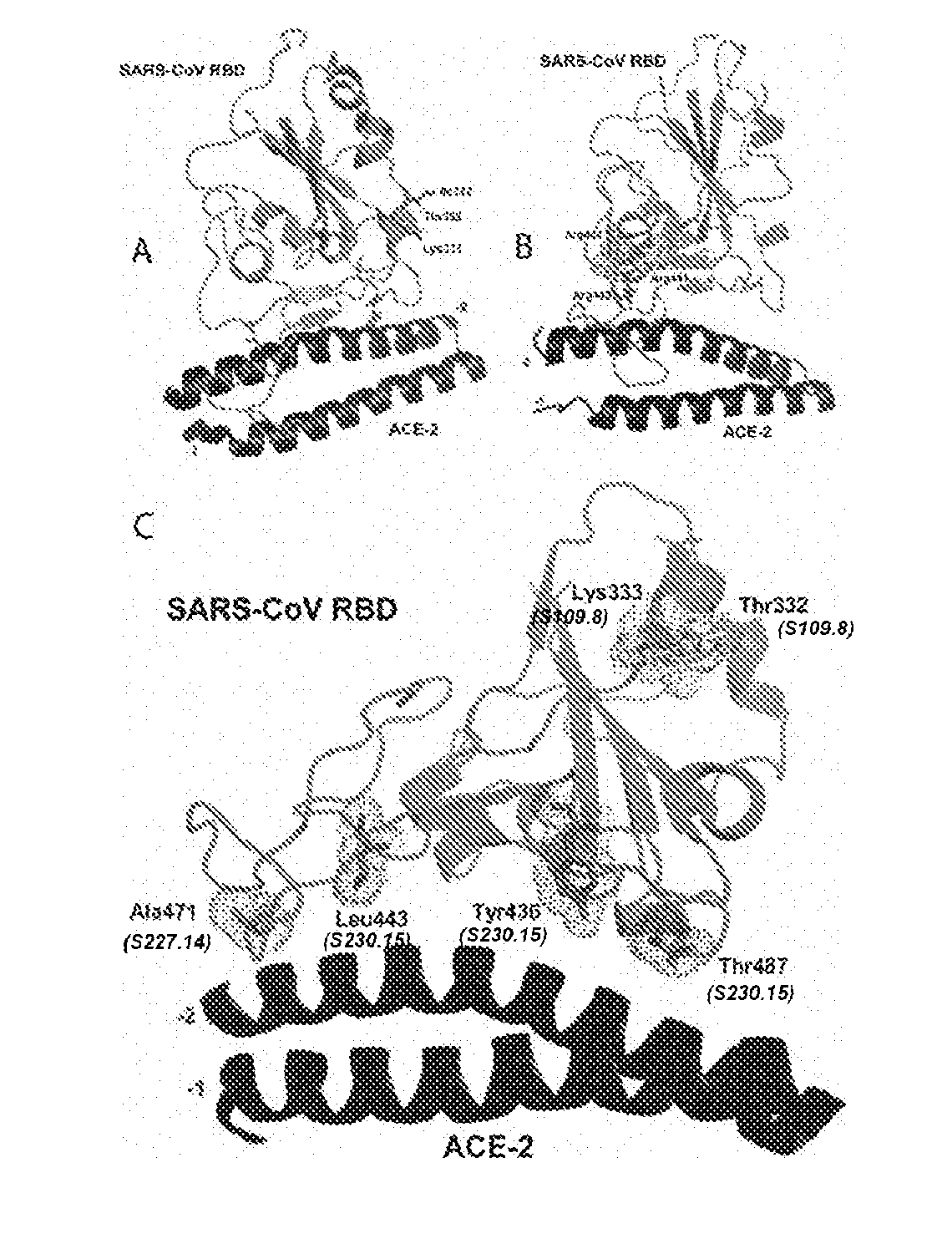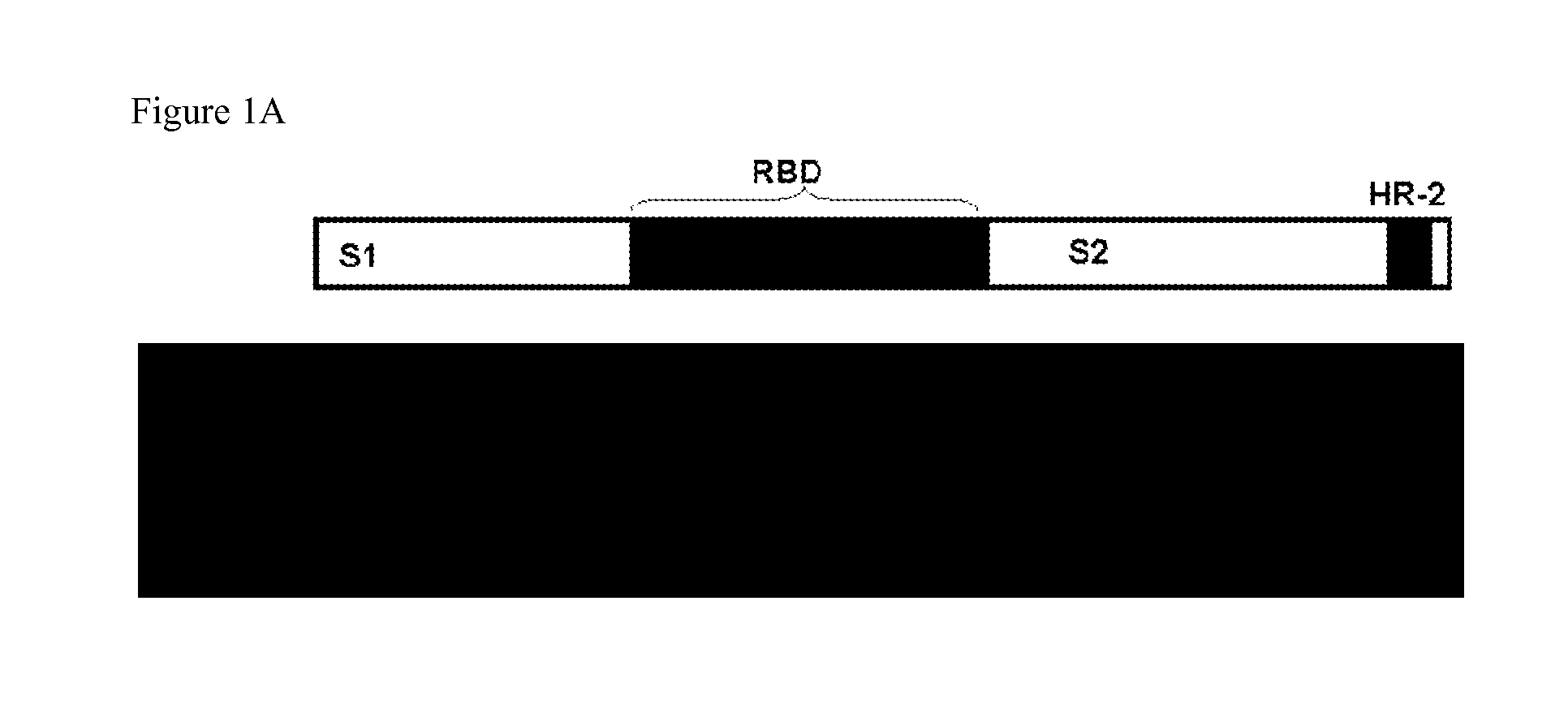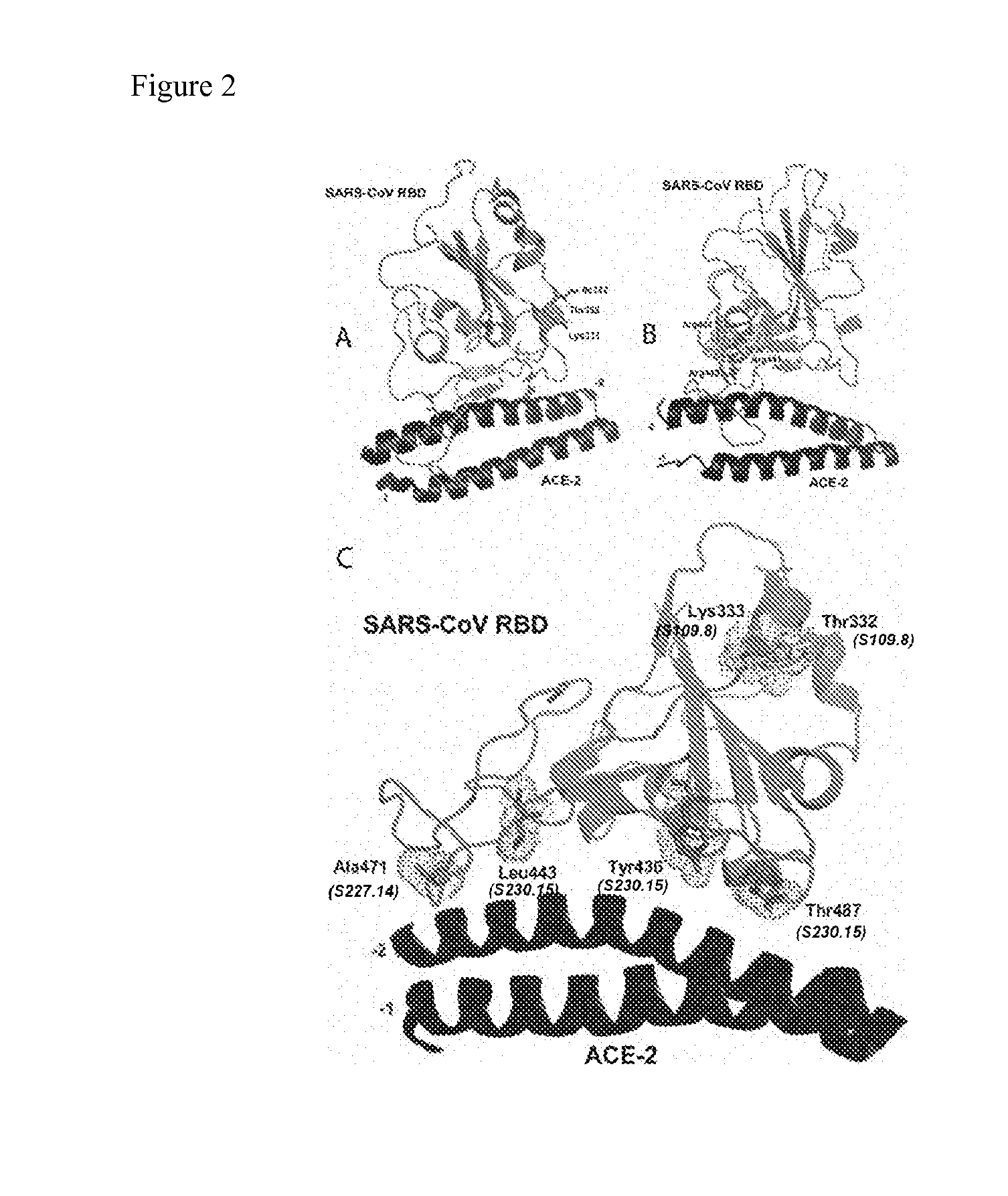CROSS-NEUTRALIZING HUMAN MONOCLONAL ANTIBODIES TO SARS-CoV AND METHODS OF USE THEREOF
- Summary
- Abstract
- Description
- Claims
- Application Information
AI Technical Summary
Benefits of technology
Problems solved by technology
Method used
Image
Examples
example 1
General Methods Employed in Assays
[0173]Viruses and cells. The generation and characterization of the recombinant infectious clone (ic) of Urbani, icCUHK-W1, icGZ02, icHC / SZ / 61 / 03, icA031G and icMA15 have been described previously (35, 39). Briefly, the Urbani spike gene in icUrbani was replaced by the various spike genes of CUHK-W 1, GZ02, HC / SZ / 61 / 03 and A031G. All recombinant icSARS-CoV strains were propagated on Vero E6 cells in Eagle's minimal essential medium (Invitrogen, Carlsbad, Calif.) supplemented with 10% fetal calf serum (HyClone, Logan, Utah), kanamycin (0.25 μg / ml) and gentamycin (0.05 μg / ml) at 37° C. in a humidified CO2 incubator. All work was performed in a biological safety cabinet in a biosafety level 3 (BSL3) laboratory containing redundant exhaust fans. Personnel were equipped with powered air-purifying respirators with high-efficiency particulate air and organic vapor filters (3M, St. Paul, Minn.), wore Tyvek suits (DuPont, Research Triangle Park, N.C.) and we...
example 2
[0188]Identification of cross-neutralizing mAb. A panel of 23 human mAbs was tested for their neutralizing activity against one or multiple icSARS-CoV bearing spike variants from the late, middle, early and zoonotic phases of the epidemic. The panel includes a number of mAbs (S228.11, S222.1, S237.1, S223.4, S225.12, S226.10, S231.19, S232.17, S234.6, S227.14, S230.15, S110.4, S111.7) that were not described in isolation (49) and with the exception of S110.4 and S111.7, were all isolated at a late time point after infection with SARS-CoV (2 years).
[0189]All mAbs efficiently neutralized the late phase icUrbani isolate (Table3) which was homologous to the strain isolated from the patient used to produce the mAbs (52). Interestingly, when testing the mAbs against the middle, early and zoonotic isolates, six distinct neutralization patterns were identified (Table 3). Two unique group I monoclonal antibodies were identified that specifically neutralized the homologous late phase isolate,...
example 3
[0190]Identification of mAbs that inhibit binding of SARS-CoV S glycoprotein to ACE-2. To identify the mAbs that directly inhibit the binding of SARS-CoV to its cellular receptor ACE-2 as a mechanism of neutralization, we assessed the capacity of the mAb panel described above to inhibit the binding of the SARS-CoV S1 domain to human ACE-2 expressed on the surface of a transfected murine DBT cell line. The antibody activity is expressed as the concentration that blocks 50% of spike binding to ACE-2 as well as the maximum inhibition values (Table 3). Most of the antibodies completely inhibited binding, although with different potencies (Table 3; see for example S230 and S3.1). Of note, some antibodies only partially inhibited binding of the spike protein even when tested at the highest concentrations (see for example S124.6, S109.8). Not surprisingly a significant correlation was observed between neutralization titers and inhibition titers of SARS-CoV S glycoprotein binding to ACE-2 (...
PUM
| Property | Measurement | Unit |
|---|---|---|
| Fraction | aaaaa | aaaaa |
| Concentration | aaaaa | aaaaa |
| Molar density | aaaaa | aaaaa |
Abstract
Description
Claims
Application Information
 Login to View More
Login to View More - R&D
- Intellectual Property
- Life Sciences
- Materials
- Tech Scout
- Unparalleled Data Quality
- Higher Quality Content
- 60% Fewer Hallucinations
Browse by: Latest US Patents, China's latest patents, Technical Efficacy Thesaurus, Application Domain, Technology Topic, Popular Technical Reports.
© 2025 PatSnap. All rights reserved.Legal|Privacy policy|Modern Slavery Act Transparency Statement|Sitemap|About US| Contact US: help@patsnap.com



